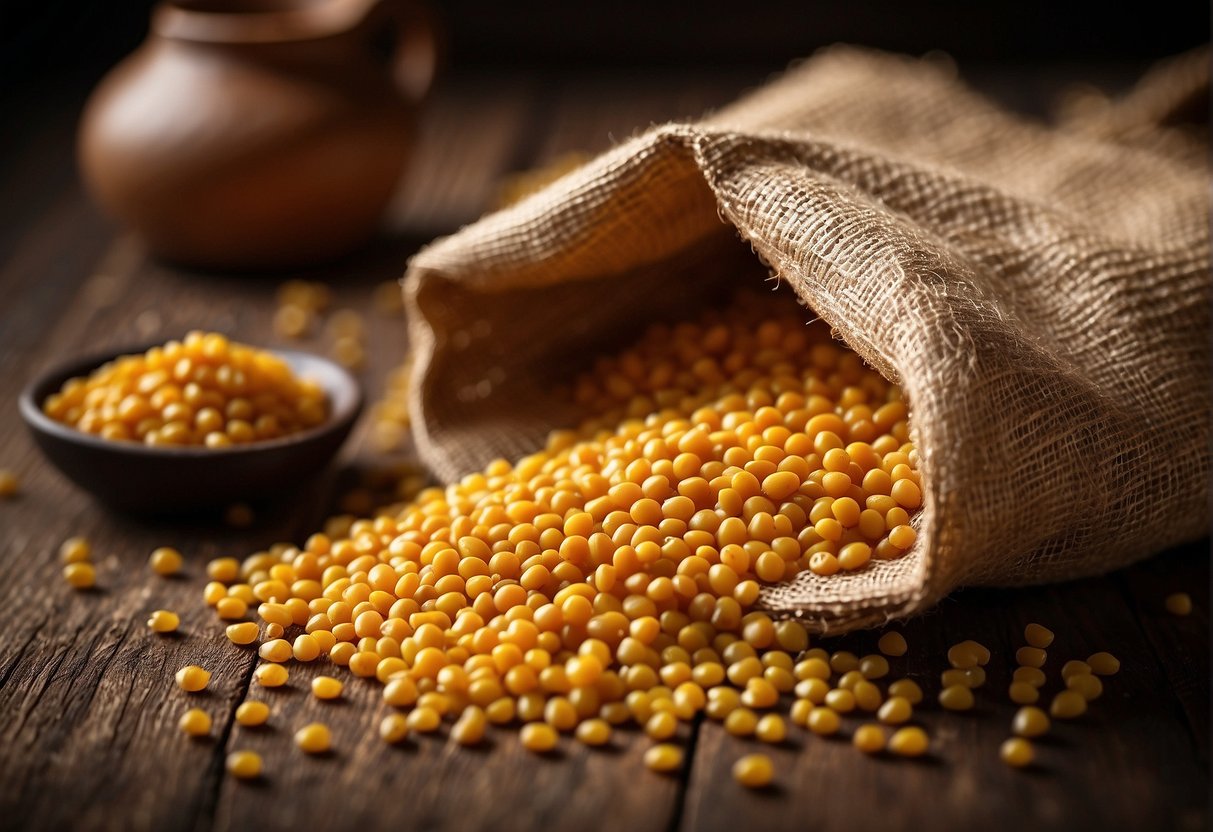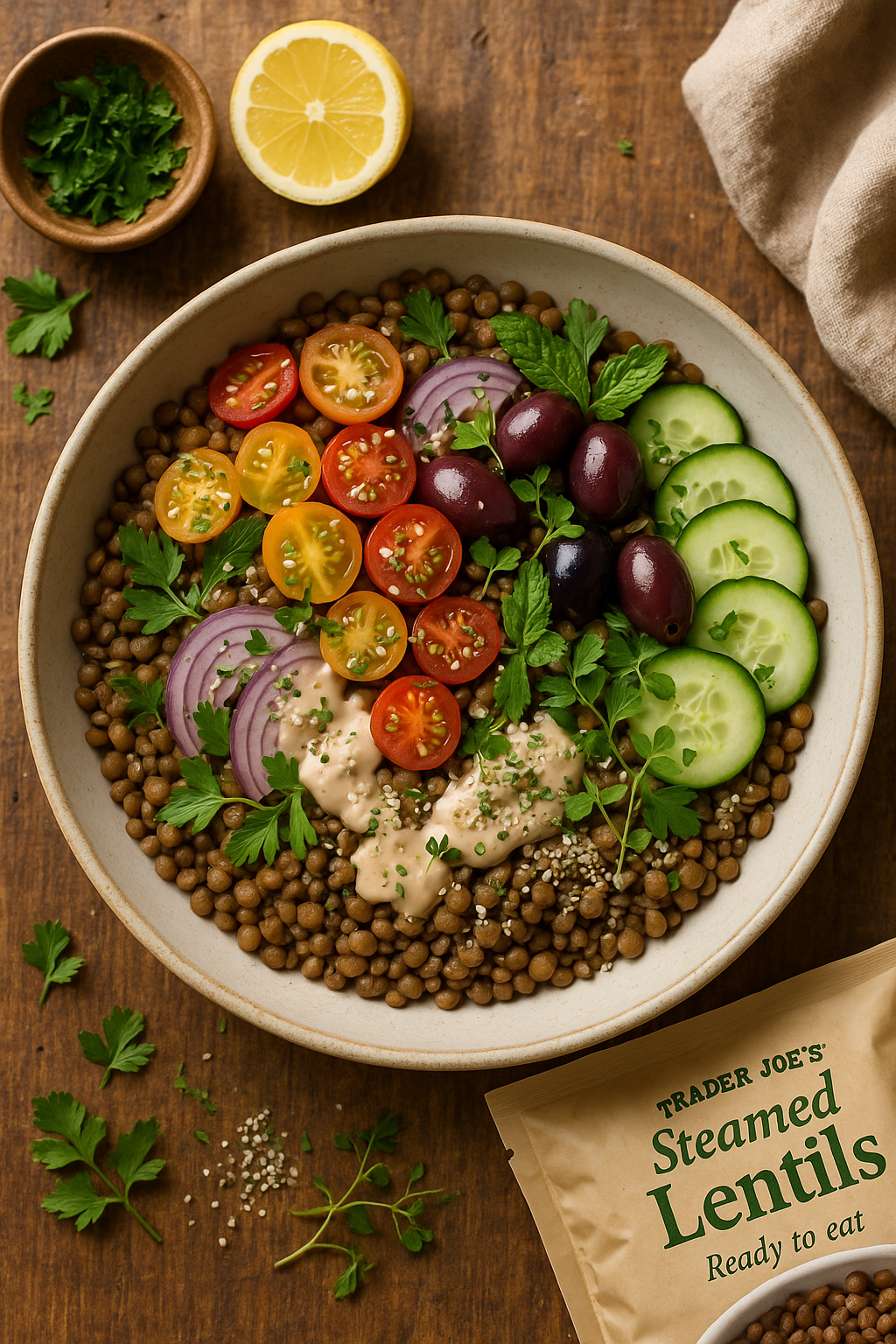It all started when my stepmom brought some zucchini seeds last year when she and my dad visited from the UK. I remember her excitement as she handed me the small packets, each containing promises of different varieties I had never heard of before. “Try these,” she said with a knowing smile, “you’ll be amazed at how different types of zucchini can taste and look.”
That simple gesture launched me into a fascinating world of summer squash diversity that completely transformed my garden and my plate. What began as curiosity about a few seed varieties evolved into a passionate exploration of zucchini cultivation that has enriched my plant-based lifestyle beyond measure.
The revelation that zucchini extends far beyond the familiar dark green cylinders found in grocery stores opened my eyes to incredible possibilities. Each variety brings unique flavors, textures, and visual appeal to both garden beds and dinner tables, making them essential components of any thriving plant-based kitchen.
The Botanical Foundation of Zucchini
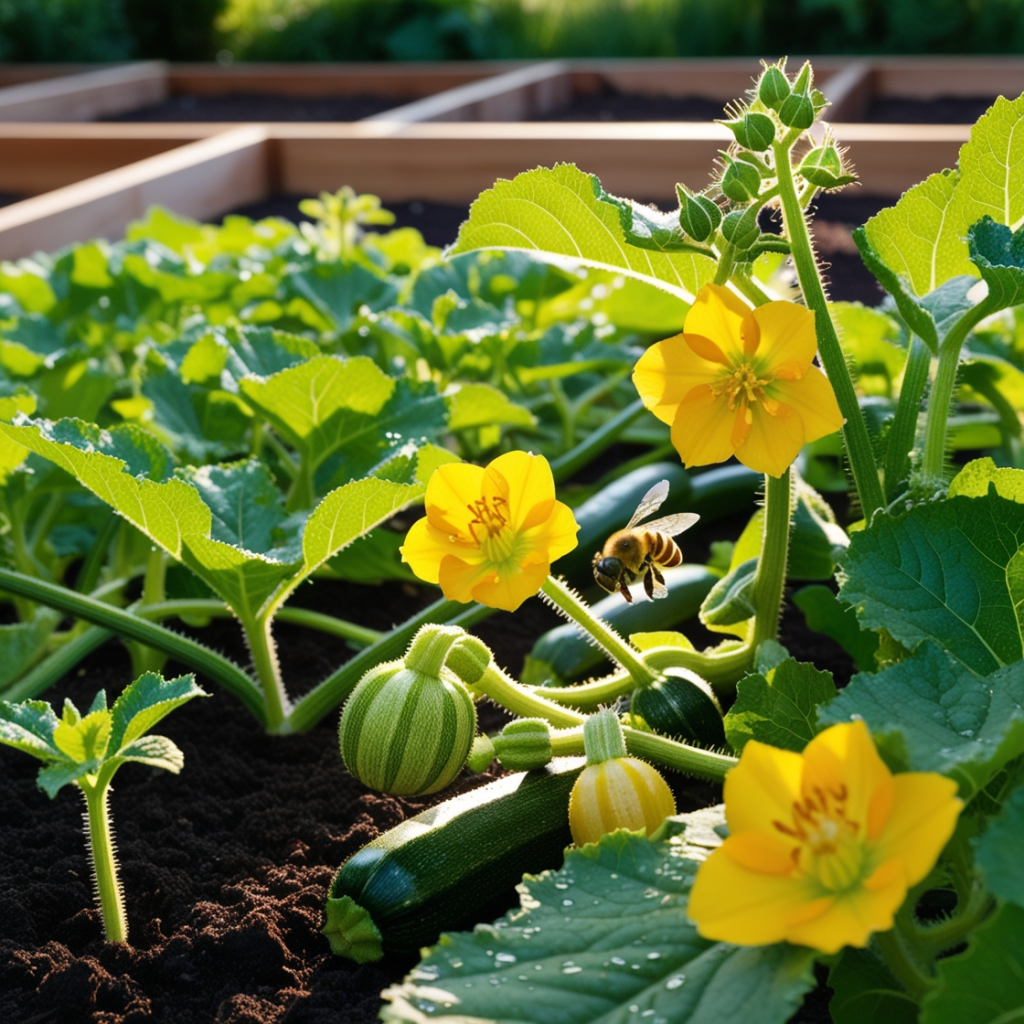
When I first started researching zucchini for my garden, I discovered that these familiar vegetables belong to the Cucurbitaceae family, making them cousins to cucumbers, melons, and pumpkins. What surprised me most was learning that zucchini actually originated in Central America, not Italy as I had assumed. The Italians simply perfected the varieties we recognize today and gave them the name “zucchini.”
After growing several varieties myself, I’ve observed that most zucchini follow a fairly predictable timeline. The seeds germinate quickly once the soil warms up, and I typically see my first harvest within 50-65 days of planting. What fascinates me about these plants is how their vines sprawl across my garden beds, producing separate male and female flowers that need bees and other pollinators to create fruit.
While we’re familiar with classic dark green zucchini, incredible diversity exists beyond grocery store offerings. These plants are remarkably forgiving – they thrive in warm weather with consistent watering and decent drainage. This resilience makes them ideal for beginners while providing experienced gardeners with reliable, abundant harvests.
Types of Zucchini: Classification Made Simple
The world of zucchini varieties can seem overwhelming at first glance, but organizing them into clear categories makes selection much easier. I’ve found that grouping varieties by their primary characteristics helps gardeners choose the best options for their specific needs and growing conditions.
Classic green zucchini represents the most familiar category, featuring the dark green, cylindrical fruits most people recognize. These reliable producers include varieties like ‘Black Beauty‘ and ‘Dark Green’, offering consistent yields and universal culinary applications.
Yellow and gold varieties bring sunshine to garden beds with their bright, cheerful colors. Varieties such as ‘Golden Zucchini’ and ‘Sunburst’ provide identical nutritional profiles to their green cousins while adding visual interest to dishes and landscape designs.
Round and globe varieties break traditional expectations with their spherical shapes, perfect for stuffing and creative presentations. These types of zucchini include ‘Eight Ball’ and ‘Ronde de Nice‘, offering unique culinary opportunities that standard varieties cannot match.
Striped and speckled cultivars showcase nature’s artistic tendencies through their distinctive patterns and colorations, creating conversation pieces in both gardens and kitchens.
Popular Types of Zucchini: The Essential Varieties
Classic Green Champions
‘Black Beauty’ remains the gold standard among traditional varieties, producing glossy, dark green fruits that reach optimal harvest size within 48-55 days. Its reliable production and disease resistance make it perfect for beginning gardeners, while its tender flesh and mild flavor suit countless culinary applications.
‘Cocozelle‘ offers an Italian heirloom experience with distinctive light and dark green striping. This variety produces smaller, more tender fruits ideal for early harvest, delivering concentrated flavors that enhance Mediterranean-inspired dishes. The compact plants work well in smaller garden spaces while maintaining generous production.
‘Dunja’ brings hybrid vigor to the classic green category, featuring exceptional disease resistance and extended harvest periods. The glossy fruits maintain their quality longer than many varieties, making them excellent choices for market gardening or preservation projects.
Golden Beauties
‘Golden Zucchini’ transforms expectations with its bright yellow skin and creamy white flesh. The mild, slightly sweet flavor complements both raw preparations and cooked dishes, while the vibrant color adds visual appeal to salads, stir-fries, and baked goods.
‘Sunburst Pattypan‘ technically falls into the summer squash category but deserves mention for its scalloped edges and golden color. These small, round fruits harvest best at 2-3 inches diameter, offering tender texture and delicate flavor perfect for stuffing or grilling.
Round and Globe Varieties
‘Eight Ball’ revolutionizes zucchini expectations with perfectly spherical fruits that reach tennis ball size at optimal harvest. The uniform shape makes them ideal for stuffing with grains, vegetables, or plant-based proteins, creating impressive presentation pieces for dinner parties.
‘Ronde de Nice’ represents French culinary tradition through its pale green, round fruits marked with darker stripes. This heirloom variety produces prolifically, with fruits best harvested at 2-4 inches diameter for optimal tenderness and flavor concentration.
Heirloom Treasures
‘Costata Romanesco‘ showcases Italian heritage through its distinctive ribbed exterior and nutty, complex flavor. The pale green fruits develop prominent ridges that create natural stuffing compartments, while the dense flesh holds up beautifully in extended cooking applications.
This remarkable variety demonstrates how types of zucchini evolved through centuries of careful selection, developing characteristics that serve specific culinary traditions and regional preferences.
Nutritional Powerhouse: The Health Benefits
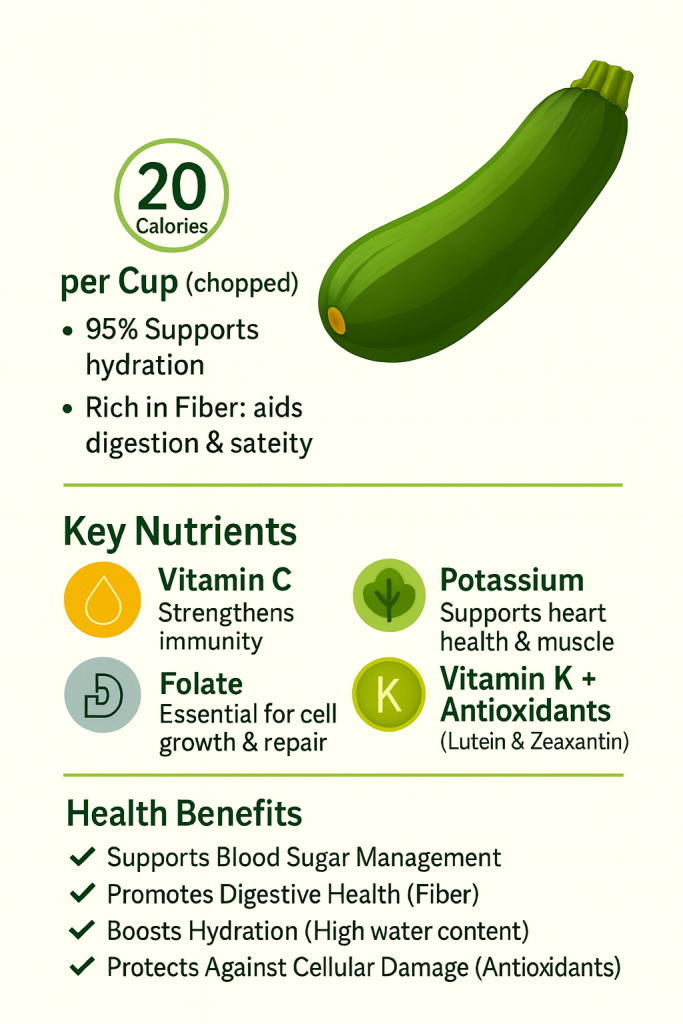
My transition to a more plant-based lifestyle revealed zucchini’s impressive nutritional profile. Each cup of chopped zucchini contains only 20 calories while delivering significant amounts of vitamin C, potassium, and dietary fiber. The high water content supports hydration, while the fiber promotes digestive health and satiety.
Zucchini provides notable amounts of folate, vitamin K, and vitamin A, supporting everything from cellular function to immune system health. The antioxidants present in zucchini, including lutein and zeaxanthin, contribute to eye health and may help protect against age-related vision problems.
The vegetable’s low glycemic index makes it excellent for blood sugar management, while its versatility allows creative incorporation into countless plant-based meals. Whether spiralized into noodles, grated into baked goods, or grilled as a side dish, zucchini consistently delivers nutrition without compromising flavor or satisfaction.
Growing Different Types of Zucchini Successfully
Soil preparation forms the foundation of successful zucchini cultivation. I’ve learned that these plants thrive in rich, well-draining soil with pH levels between 6.0-7.5. Adding compost or well-aged manure before planting provides the organic matter and nutrients these heavy feeders require throughout their growing season.
Spacing considerations vary among different varieties, but most benefit from 3-4 feet between plants to ensure adequate air circulation and room for vine expansion. Bush varieties like ‘Patio Star’ can grow closer together, while vining types need more generous spacing to prevent overcrowding and disease issues.
Consistent watering proves crucial for preventing bitter flavors and blossom end rot. I maintain soil moisture through drip irrigation or soaker hoses, avoiding overhead watering that can promote fungal diseases. Mulching around plants conserves moisture while suppressing weeds and regulating soil temperature.
Companion planting enhances garden success when growing various types of zucchini. Nasturtiums attract beneficial insects while deterring squash bugs, and radishes can help break up soil compaction around zucchini roots.
Creative Culinary Applications
The versatility of different zucchini varieties extends far beyond basic preparations. Round varieties excel in stuffed applications, where their natural bowls hold quinoa pilafs, vegetable medleys, or plant-based protein mixtures. The firm walls maintain structure during baking while absorbing surrounding flavors.
Spiralizing has revolutionized zucchini’s role in plant-based cuisine, creating satisfying pasta alternatives that pair beautifully with rich tomato sauces, creamy cashew-based preparations, or light herb oils. Different varieties produce varying noodle textures, with firmer types like ‘Cocozelle’ holding their shape better than more tender varieties.
Grating zucchini into baked goods adds moisture, fiber, and subtle nutrition to muffins, breads, and pancakes. The neutral flavor allows zucchini to enhance texture without overwhelming other ingredients, making it an ideal vehicle for incorporating more vegetables into sweet preparations.
Grilling brings out natural sweetness in zucchini while creating appealing char marks and smoky flavors. Thicker slices work best for direct grilling, while smaller varieties can be grilled whole or halved lengthwise.
Zucchini and Herb Fritters Recipe
These crispy fritters showcase zucchini’s versatility while providing a satisfying plant-based meal. The combination of fresh herbs and chickpea flour creates protein-rich patties perfect for breakfast, lunch, or light dinner.
Ingredients:
- 2 medium zucchini, grated (about 3 cups)
- 1 teaspoon salt
- 1 cup chickpea flour
- 1/4 cup fresh parsley, chopped
- 2 tablespoons fresh chives, chopped
- 1 tablespoon fresh dill, chopped
- 2 cloves garlic, minced
- 1/4 teaspoon black pepper
- 1/4 teaspoon smoked paprika
- 3/4 cup water (approximately)
- 2 tablespoons olive oil for cooking
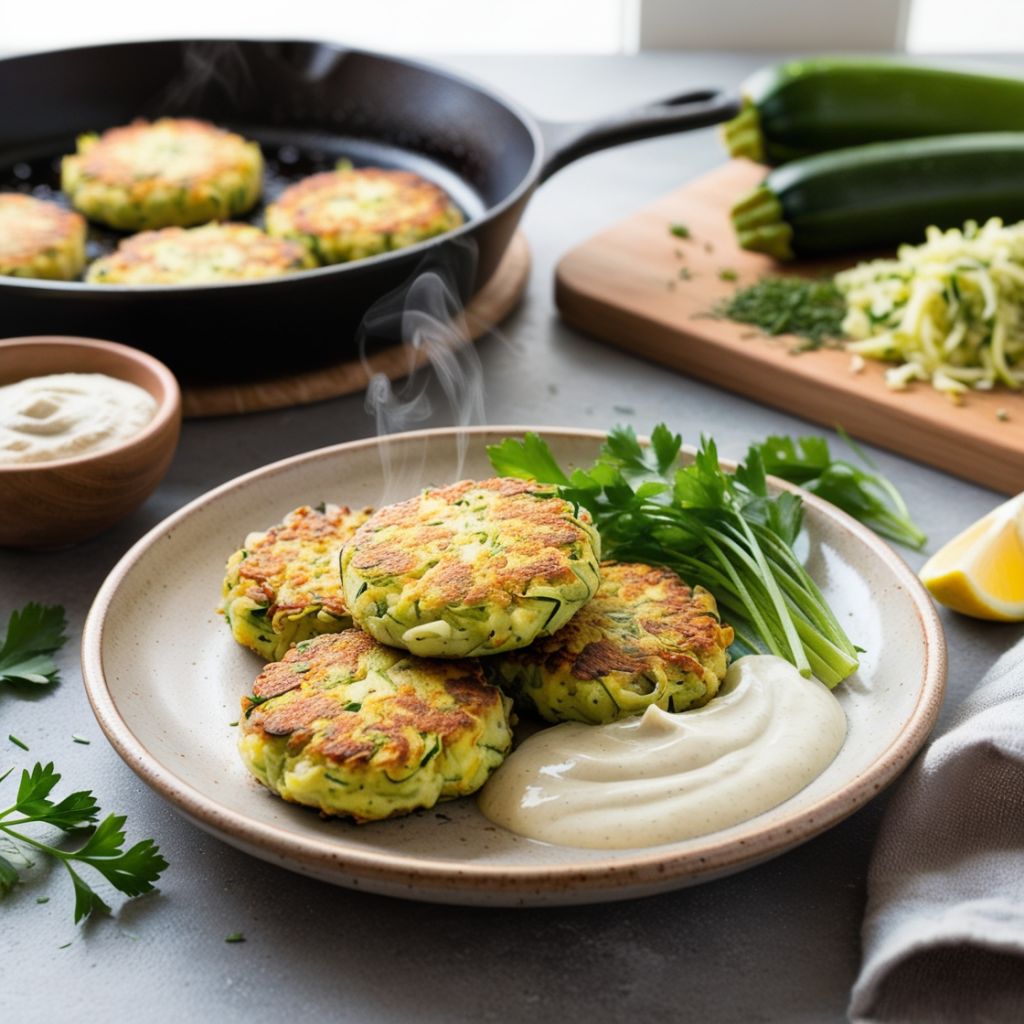
Instructions:
- Place grated zucchini in a colander, sprinkle with salt, and let drain for 15 minutes
- Squeeze excess moisture from zucchini using clean kitchen towel
- Combine chickpea flour, herbs, garlic, pepper, and paprika in large bowl
- Add drained zucchini and mix thoroughly
- Gradually add water until mixture forms cohesive batter
- Heat olive oil in large skillet over medium heat
- Drop 1/4 cup portions of batter into pan, flatten slightly
- Cook 3-4 minutes per side until golden brown and crispy
- Serve immediately with your favorite plant-based yogurt or tahini sauce
Storage and Preservation of Various Types of Zucchini
Proper storage techniques vary depending on intended use and variety characteristics. Fresh zucchini keeps best in the refrigerator crisper drawer, wrapped in perforated plastic bags to maintain humidity while allowing air circulation. Most varieties maintain quality for 5-7 days under these conditions.
Freezing grated zucchini extends its usability for baking applications throughout winter months. I blanch grated zucchini briefly, drain thoroughly, then freeze in measured portions convenient for recipes. This preparation method works particularly well with prolific varieties that produce more than fresh consumption requires.
Dehydrating creates concentrated zucchini chips that serve as healthy snacks or soup additions. Thin, uniform slices dry most effectively, developing concentrated flavors and crispy textures that store well in airtight containers.
Pickling transforms excess harvest into tangy condiments that complement plant-based meals throughout the year. Quick pickles using vinegar, herbs, and spices preserve zucchini’s crunch while adding bright, acidic notes to sandwiches and grain bowls.
Troubleshooting Common Growing Challenges
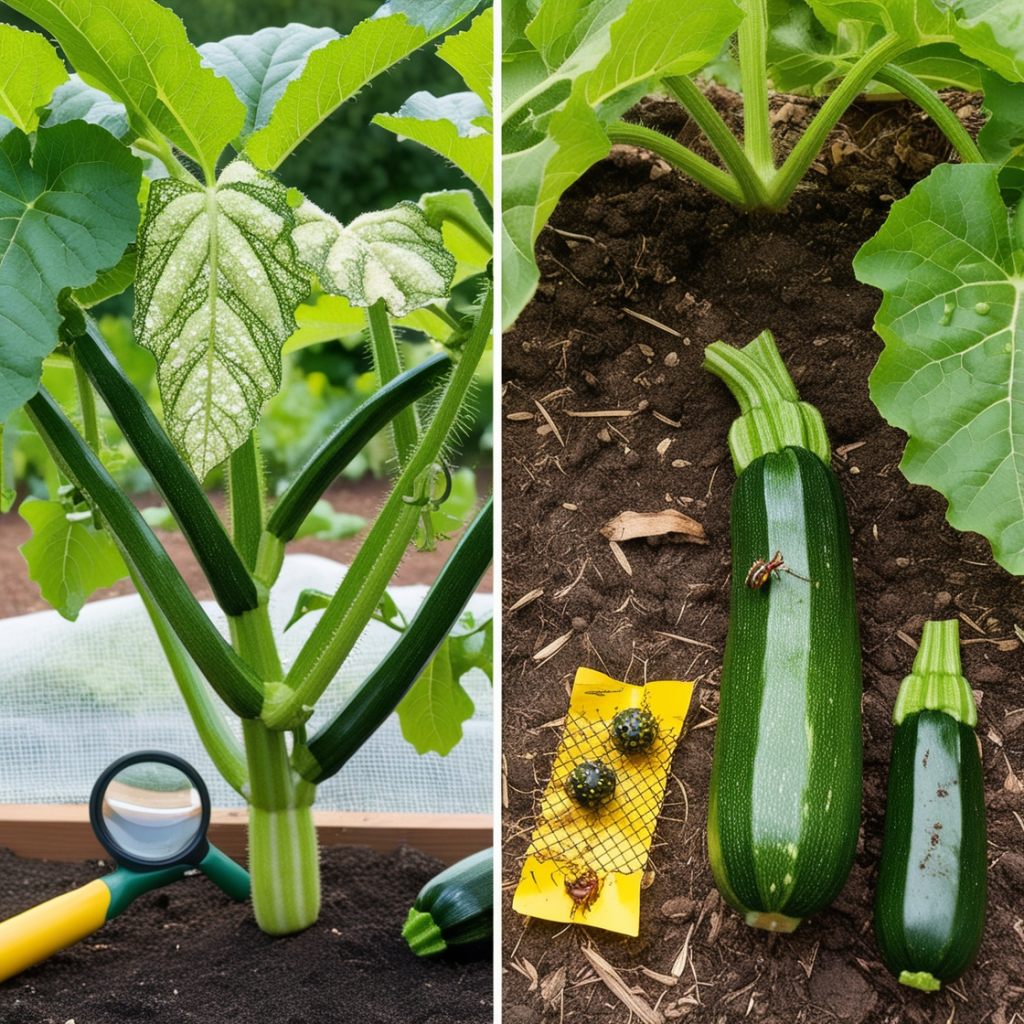
Squash vine borers present the most serious threat to zucchini plants, with larvae tunneling through stems and causing sudden plant collapse. Row covers during early growth stages prevent adult moths from laying eggs, while regular stem inspections help identify problems before serious damage occurs.
Powdery mildew appears as white, powdery coating on leaves, particularly during humid conditions with poor air circulation. Preventive measures include proper plant spacing, avoiding overhead watering, and selecting resistant varieties when available among different types of zucchini.
Blossom end rot manifests as dark, sunken spots on fruit ends, typically resulting from inconsistent watering and calcium uptake issues. Maintaining consistent soil moisture and ensuring adequate calcium availability through soil testing and amendment prevents most occurrences.
Bacterial wilt, spread by cucumber beetles, causes rapid plant decline and death. Yellow sticky traps help monitor beetle populations, while row covers protect young plants during vulnerable establishment periods.
The Plant-Based Garden Revolution
My experience growing different types of zucchini has reinforced my commitment to plant-based living and sustainable gardening practices. These versatile vegetables demonstrate how diversifying our gardens creates more resilient food systems while providing nutritional variety that supports optimal health.
The abundance that zucchini plants provide throughout their growing season exemplifies nature’s generosity when we work cooperatively with natural systems. Each variety offers unique contributions to both garden ecosystems and our plates, creating opportunities for creativity and experimentation.
If you’re beginning your first garden or expanding existing growing spaces, incorporating diverse types of zucchini enriches both the gardening experience and culinary possibilities. Begin with one or two varieties that suit your taste preferences and growing conditions, then gradually expand your collection as confidence and experience grow.
The seeds my stepmom shared have multiplied into a diverse collection that continues teaching me about plant diversity, seasonal harvests, and the deep satisfaction that comes from growing our own food. Each harvest brings new appreciation for the simple miracle of seed, soil, and sunshine transforming into nourishment that sustains both body and spirit.
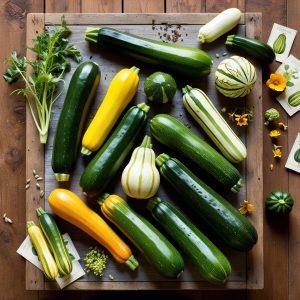
*We may earn a commission for purchases made using our links. Please see our disclosure to learn more.


